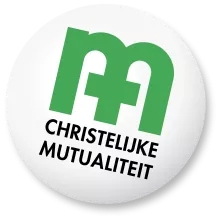eAttest
For cash payments, as a general practitioner or specialist (in a private practice) you can send your certificates for care provided electronically via MyCareNet.
You may apply this method for the eAttest to all your patients when they pay in cash.
It is not necessary to register on MyCareNet. Moreover, you should not have a therapeutic relationship with your patient.
Consult the list of software approved for the use of the eAttest.
Attestation on paper remains possible
The eAttest is currently optional to use.
It is possible to alternately use the paper and electronic circuit. However, it is not permitted to certify the same consultation electronically and on paper, and to give the certificate to the patient.
Unlike the eGMD, the eAttest does not work according to the opt-in principle. So you are not obliged to use it for all your patients or consultations.
What are the benefits of the eAttest?
- As a GP you have less administration and you receive fewer correction documents.
- The consultation is immediately known to CM, which is useful if you are entitled to a GMD lump sum for the patient.
- Reimbursement to the patient is faster.
- The chance of losing a certificate is non-existent and the patient should no longer make any effort to provide the certificate to CM.
How do you attest the eAttest?
Consult insurability
You can easily consult your patient's insurability via software packages recognized by the NIC .
Certain software even automatically asks whether you want to request insurability when you open your patient's file.
Request rates via eTar
After consulting the insurability, you can request the correct rates via eTar (consultation rate). This is not mandatory, but certainly recommended.
Most software packages that have been approved by the NIC have eTar integrated into their package as standard . eTar is also available via the MyCareNet portal .
Prepare an eCertificate
If you have the correct rates, you can draw up an electronic certificate at the end of the consultation instead of a paper certificate. This is only possible via a software package approved by the NIC . The patient then pays for the consultation.
MyCareNet automatically sends the certificate to CM . After a few seconds you will receive a receipt . The receipt number is added by your software package to the supporting documents that you must provide to the patient. This also includes the co-payment paid and details of the services charged.
Patients can use this receipt number to contact CM if they have any questions about the certificate or the refund. This number will automatically remain in your software package and will become the reference for the consultation.
If the procedure is completed successfully, CM will transfer the reimbursement to the patient's account .
Important : you may not report past performance via the eAttest. Also for home visits, the eAttest must be sent during the home visit itself.
Not accepted
The same rules apply to the eAttest as to the paper circuit.
Incorrectly communicated data will be immediately rejected as much as possible. Therefore, some certificates will not be accepted in the eAttest circuit, e.g. if the patient is registered in a medical home or if the patient is not affiliated with the stated health insurance fund. In that case, it remains necessary to prepare a paper certificate and give it to the patient.
If an eAttest is wrongly accepted (e.g. problem with an accreditation in a reference file), CM will contact you at a later date.
You can prevent many problems by consulting insurability in advance.
Frequently Asked Questions
The difference between the third-party payment arrangement (eFact) and the cash payment (eAttest) in the electronic circuit is no different from the difference between the third-party payment arrangement and the cash payment in the paper circuit.
- Third party payment scheme
Your patient only pays you the co-payment and supplements.
You charge the amount of the health insurance reimbursement directly to CM. - Cash payment
Your patient pays you the full amount (fees and supplements).
With the electronic method, you send the certificate directly to CM via your software package. The patient automatically receives the refund on his account.
With the paper method, you provide a certificate to the patient. This person delivers it to CM, who is responsible for the refund.
In the paper circuit, the patient must provide CM with the certificate of assistance provided. In the electronic circuit , you provide the patient's certificate directly to CM via your software package.
In both cases, CM takes care of payment to the patient.
No, this isn't possible. To process your GMDs easily and faster, you can use the eGMD application.
If you have a WiFi or 4G connection, you can use the eAttest on a laptop or tablet during a home visit. You must provide proof to the patient.
If this is not possible, you can certify on paper during the home visit. Most software packages also have a mobile version. If not, contact your software supplier.
For the eAttest, you must provide the patient with a supporting document showing the receipt number that you received from CM when the electronic certificate was sent. This allows the patient to contact CM with questions about reimbursement or certification. In addition, the supporting document contains information about the co-payment paid and details of the services charged. Since the eAttest is exchanged electronically, it is mandatory to provide supporting documentation to the patient.
CM informs its members through the usual channels (member magazines, website, newsletters).
Yes, because the Riziv provides financial support for the use of several E-tools. More information about the integrated practice premium can be found on the Riziv website.
